Born and raised on the southwest side of Chicago, IL, Steve Thanos currently lives, works, and brews exBEERiments in the western suburbs the Windy City with his wife, child, and Boston Terrier. As a teacher of nearly two decades, Steve has always enjoyed the learning process, which certainly influenced his interest in brewing. Since 2014, he has been an active member of the Plainfield Ale and Lager Enthusiasts homebrew club, where he has served in the roles of both president and vice-president.
| ABOUT STEVE |
How did you get into brewing?
It was the early 2000s and I’d landed my first job as a teacher. I was a fan of craft beer, so to pass the time on the weekends, I figured I’d try brewing my own. As fun as that batch was, life happened and I put brewing on the backburner for 10 years, returning to it in 2013 after a friend from work shared a Sierra Nevada Torpedo clone he made with me. I loved it and threw myself into the hobby, starting off with extract before quickly moving to all-grain BIAB. I haven’t slowed down since!
What was your first batch and how did it turn out?
My first batch was an American Brown Ale extract kit, which turned out pretty good, though didn’t carbonate as quickly as I’d hoped. I ended up using a bunch of it for cooking, it worked great in a chili recipe I came up with. After a couple months, the beer was fully carbonated and tasted decent enough.
How did you get involved with Brülosophy?
I really delved into homebrewing right around the time Brülosophy was getting off the ground and I’d frequently come across their articles online. The experimental stuff was right up my alley and I was appreciative their unique take on brewing content. At the 2017 HomeBrew Con in Minneapolis, MN, while leaving the expo hall one day, I heard someone say, “that’s a horrible shirt!” I was wearing a Brülosophy t-shirt (an authentic one, not a cheap hack from Amazon) and soon realized the sarcastic comment came from Marshall. We shook hands and talked for a bit before parting ways, then I ran into him again at the next year’s conference. At some point, I let Marshall know I was interested in contributing to Brülosophy, but for various reasons, it didn’t work out. However, this all changed in the summer of 2020 when I received a message from Marshall asking if I was still interested in coming on board. After going over all of the expectations and such, I responded with a resounding, “Hell yeah!”
What xBmt has surprised you the most?
The xBmts that have surprised me the most are those dealing with fermenting lagers at warmer than recommended temperatures. When I started brewing, I viewed the whole lagering process as something only highly experienced brewers could do, but these xBmts gave me the confidence to try fermenting warmer, which has been a total game changer for me.
Have the xBmts influenced your current brewing perspectives?
Some of the xBmts have influenced my current brewing perspectives, especially considering the different kettle and dry hopping techniques that are out there these days. The numerous water chemistry xBmts have convinced me of how important water is to brewing, so I pay close attention to those and feel there is always something to learn about it. I’ve also gained a new appreciation for the idea that things don’t need to be so precise when it comes to brewing, particularly when it comes to things like fermentation temperature, mash temperature, and mash and boil length. That’s not to say I regularly disregard these aspects of the brewing process, just that I don’t fret as much about them these days.
What are your 3 favorite styles of beer?
American IPA
As cliché as it may be, I truly love a well-crafted American IPA. Whether crisp and clear or soft and hazy, I often find myself craving the hoppy balance of a tasty IPA, even in the mornings when I should be content with my coffee! There’s just something about the balance of malty sweetness and fruity hop character with the proper amount of bitterness that keeps me coming back for more.
Märzen
I find the combo of toasty and bready flavors with slight noble hop character and restrained bitterness of a Märzen incredibly enticing, a welcome change to the hoppy IPA I frequently enjoy.
American Light Lager
Clean, crisp, and well carbonated, American Light Lager is a style I love to drink while working around the house or hanging out in the pool. Whereas I tend to overthink most styles of beer I drink, I find I’m able to turn off my brain and just enjoy the simplicity of a refreshing American Light Lager.
What are your favorite ingredients?
Malt: Vienna malt
Vienna malt is my overall favorite. In addition to contributing great toasty and bready flavors to beer, I really like the golden color it imparts, plus it can be used in a wide swath of styles.
Hops: Amarillo
Amarillo is my absolute favorite hop variety, as I find the character it imparts to be so distinctive and intoxicating—sweet citrus with hints of classic floral notes. So good!
Yeast: Imperial Yeast A07 Flagship
For versatility’s sake, I’m all about Imperial Yeast A07 Flagship, or any of the other versions of the so-called “Chico strain,” as it is consistent and reliable for the majority of the beer styles I brew.
What’s your desert island beer?
Without hesitation, my desert island beer has to be Ol’ Pile from Werk Force Brewing, a great brewery out of Plainfield, IL. This American Light Lager is crisp, refreshing and never disappoints. I highly recommend anyone who happens to be in the area check these guys out!
What music do you listen to while brewing?
I always listen to music while brewing beer, and my go-to of late has been Yacht Rock, my love of which started right around the same time as my awareness of Brülosophy. Coincidence? I think not! I often chat with Marshall about music, and we happen to share a similar interest in the chill stylings of artists like Hall & Oats, Toto, and Christopher Cross. My brewing playlist includes a rather eclectic mix– from Bruce Springsteen, Tom Petty, Nirvana, Pixies, Henry Rollins, Faith No More, Chris Stapleton, Nathaniel Rateliff, PJ Harvey, Elliot Smith, Colin Hay, Neil Diamond, The Cars, and Matthew Ryan… to name a few. The list goes on and on. Music is really important to me.
What else do you enjoy doing besides brewing?
I love spending time with my wife, child, and dog. After a long day of teaching, the best thing is coming home to the people I love the most. I also really enjoy cooking, especially BBQ! Along with sharing my beer with family and friends, cooking for them ranks right up there for me. I also enjoy reading as well as watching movies and shows on Netflix.
If you could go back, what brewing advice would you give yourself?
I would advise myself to skip brewing with extract and jump right into all-grain using the BIAB method. I actually tell this to new brewers all the time because of how easy it is to consistently produce great beer. Not to bag on extract brewing, it’s a great way to get some practice in, but I found BIAB to be just as easy while allowing for more control of the process.
| BREWING GEAR & PROCESS |
While I’ve messed around with a few different all-grain setups, I’m currently brewing on a simple propane rig.
Pre-Brew Preparation
I start every batch by designing a recipe in Brewfather, which I’ve found is incredibly intuitive and has all the tools necessary to ensure a precise brew day.
My local water comes from Lake Michigan, which I run through an RV filter prior to adjusting with minerals to my desired profile. Once that’s taken care of, I weigh out the grain with an Etekcity kitchen scale then run it through my Monster Mill MM2.
I typically prepare my water and grains the night before brew day.
Brewing
With the water in my 15 gallon Amcyl kettle, I light flame on my Bayou Classic SQ14 burner to get it heating up.
When the water is at strike temperature, I drop the grain filled fabric filter from The Brew Bag in and stir to incorporate the mash.
Next, I use a Thermapen Mk4 to check the mash temperature.
It’s usually during the mash rest that I weigh out the kettle hop additions.
Following the mash rest, I remove the grain bag and give it a gentle squeeze until I’ve reached my target pre-boil volume, after which I boil the wort then chill it with my JaDeD Brewing Hydra immersion chiller.
I then rack the chilled wort to fermentation vessels that get placed in my chest freezer fermentation chamber where the temperature is regulated with an Inkbird controller.
While my groundwater is often cool enough to chill the wort to my desired ale pitching temperature, I’ll let it sit in the chamber for a bit to finish chilling during warmer months.
Packaging & Serving
When fermentation is complete, I rack the beer to a CO2 purged ball lock keg.
The filled keg is then moved to my 6-tap keezer where I typically hit it with 30 psi for 36 hours before reducing the gas to a serving pressure of 12 psi. Using this burst carbonation method, my beers are usually ready to serve 4-5 days after packaging.
For my keezer, I use a simple 6-way manifold for gas distribution to each keg and serve through Perlick 650SS Flow Control faucets.
Cleaning & Sanitation
I clean my gear with Five Star PBW and sanitize my cold-side equipment with Star San.
I do all of my clean up immediately after brewing so as to avoid gross messes (and smells).
Other Stuff
After weighing out my hops, I squeeze out as much air from the bag as possible before sealing it up and tossing them in a dedicated freezer, and I store yeast in my beer fridge.
Contact Steve via email at steve@beerconnoisseur.local and feel free to leave any questions in the comments section below!
Follow Brülosophy on:
FACEBOOK | TWITTER | INSTAGRAM
If you enjoy this stuff and feel compelled to support Brulosophy.com, please check out the Support Us page for details on how you can very easily do so. Thanks!



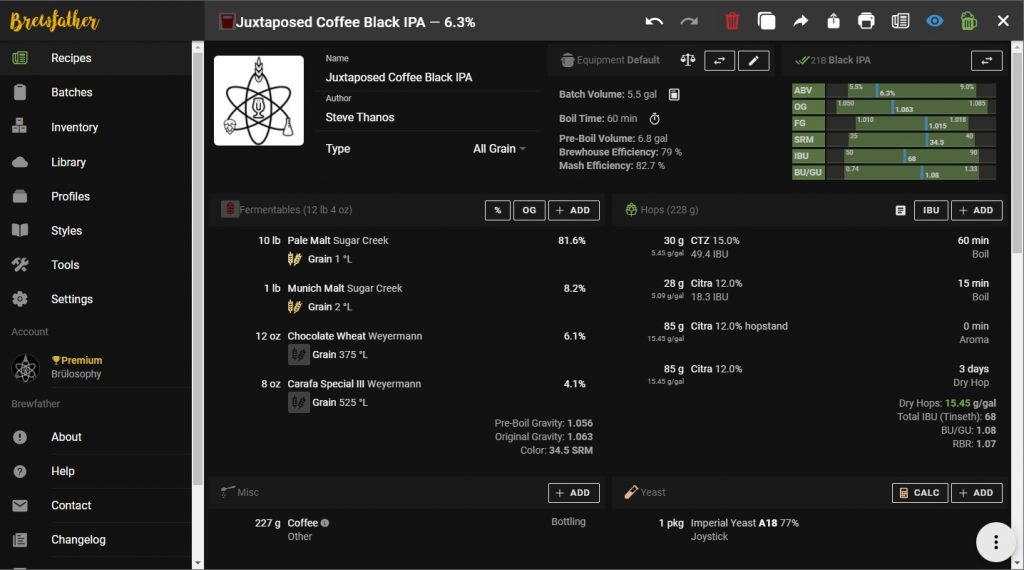


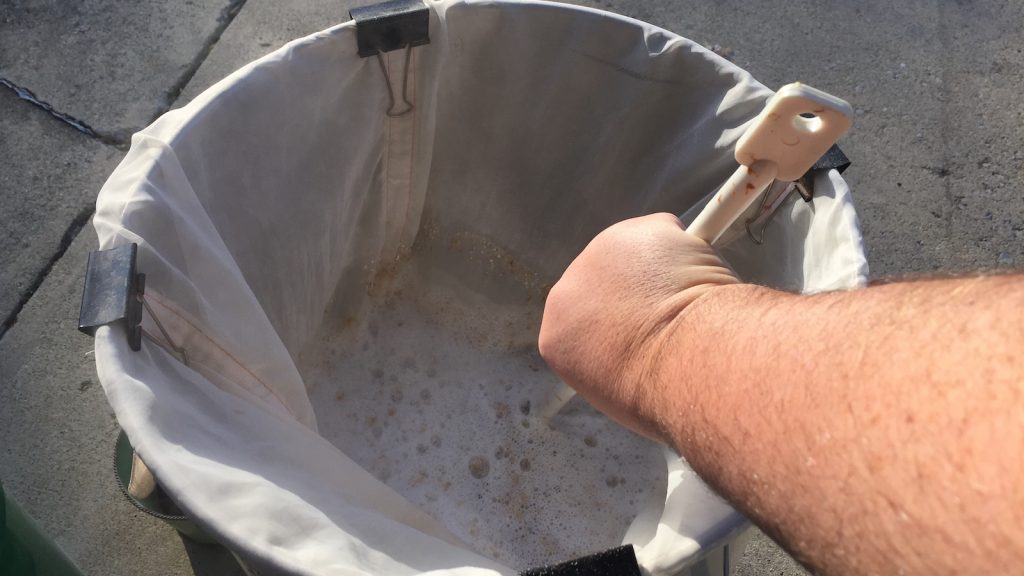


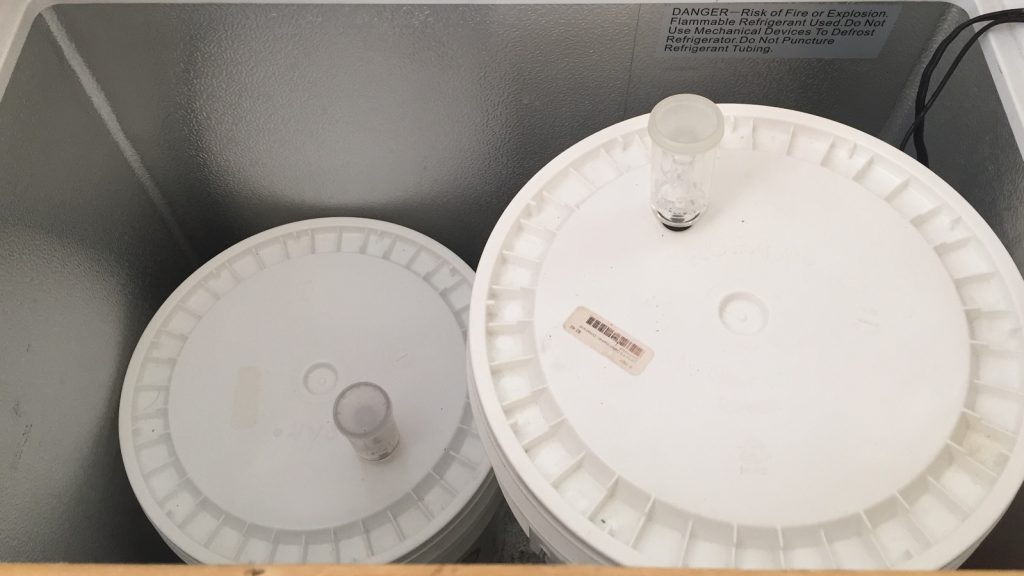

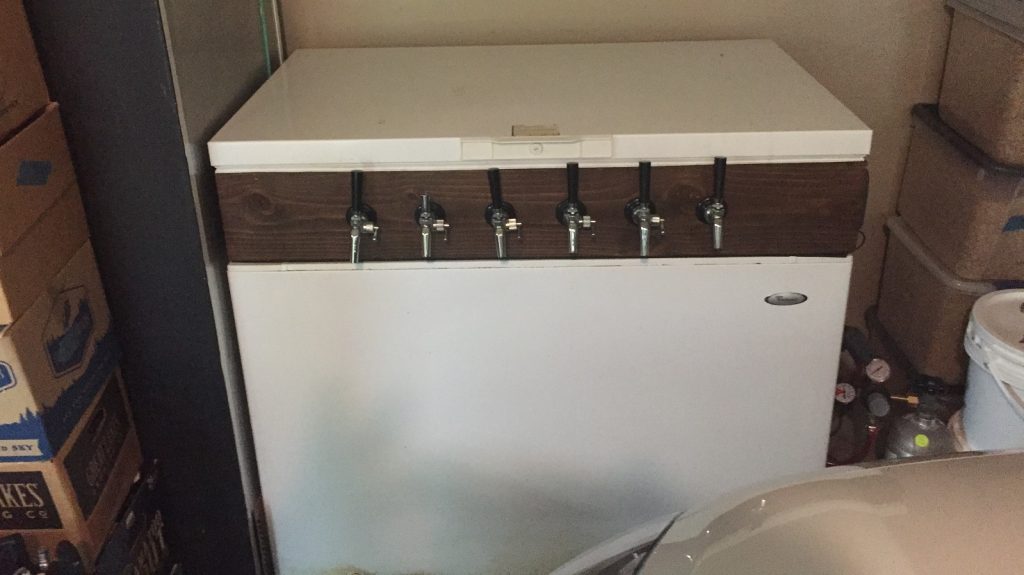

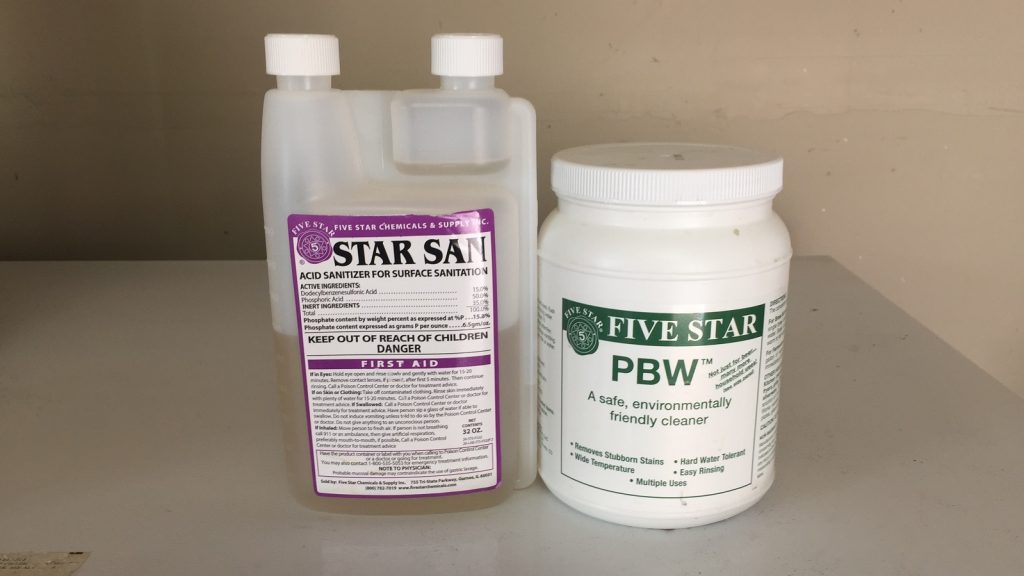









6 thoughts on “Brülosophy Contributor Spotlight: Steve Thanos”
Now I’m thinking about brewing an all Vienna all Amarillo w/ Flagship beer…
Do it! I will be brewing something similar. Keep an eye out for it. Cheers!
I hear you on the “life happened”. Started brewing in 2000, Life Happened, didn’t brew again until 2014.
One of my biggest regrets as a homebrewer is not continuing after that first batch. Cheers!
Steve I love your insight and articles. Your den of iniquity recipe is perhaps one of favs. Almost always on tap. It is truly great. Thank you!!
Thanks for the kind words, Matt. I am thrilled you are enjoying the Den of Iniquity recipe. That grist for Den has become the staple for almost all of my IPAs; often at times I will just switch out the hops. Cheers!